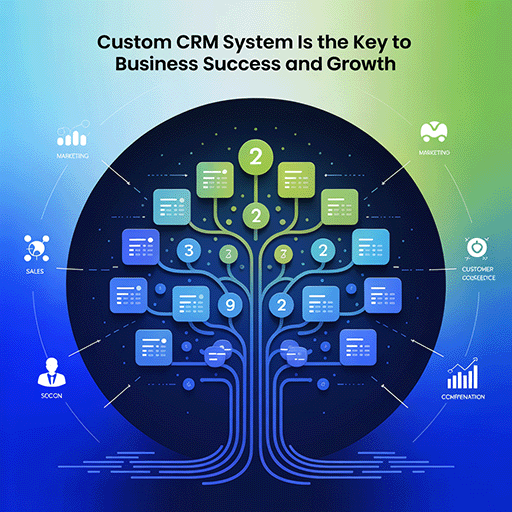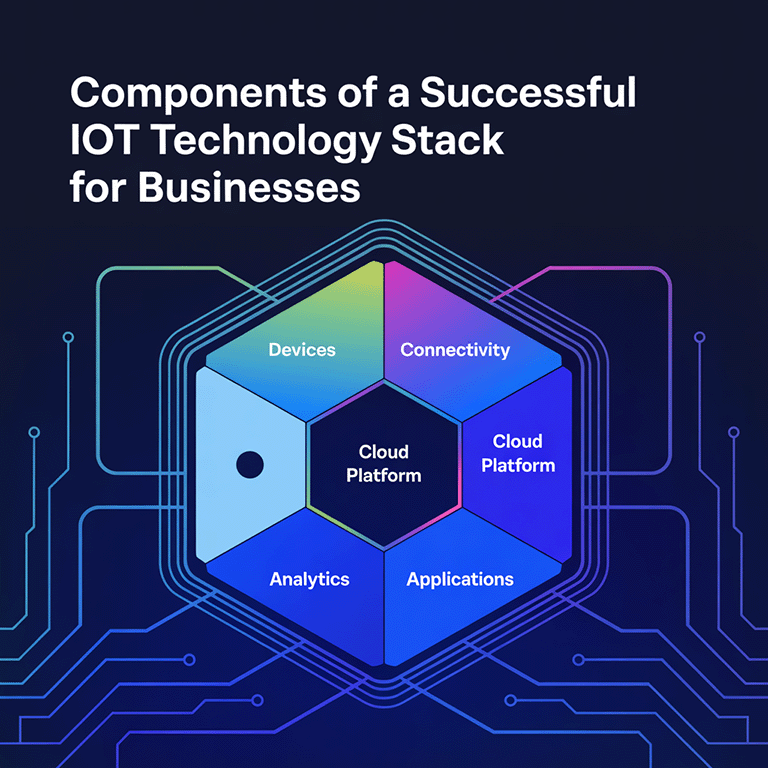Why do some tech startups raise millions while others can’t get a single call back? It’s not always about the idea, it’s about preparation, timing, and knowing where to find investors for startup success. There’s more capital than ever, but competition is high. Founders have to prove their vision fast. Whether you’re figuring out how to get investors for startup or targeting investors for business ideas, preparation matters more than luck.
In 2024, AI startups pulled in 46.4% of the $209 billion in U.S. venture capital funding. A decade ago, that number was under 10%. This shows that money follows strong markets, sharp pitches, and proven teams.
This blog breaks down how to find the right people and how to get someone to invest in your idea without wasting months in the wrong places. If you’re wondering how to get funding for an idea, especially in tech, read on.
Why Investors Invest in Startups

Founders often ask, why do investors invest in startups at all? Most do it for growth and returns. But emotion, belief in a team, and market trends matter too. Private investors who fund start-up businesses are often driven by a mix of logic and gut instinct. They look for signals: Is the team strong? Is the idea scalable? Is the product solving a pain point?
Before reaching out to investors, it’s important to have a clear understanding of your financial needs. Using an app cost calculator can help estimate development expenses and strengthen your funding pitch.
How to Find Investors for a Tech Startup or App Idea
You can’t guess your way through this process. You need a real plan. If you’re looking to find investors for startup, or asking how to get investors for a startup, it starts with knowing your targets. That means understanding the types of investors, where they gather, and what they want to see. If you don’t tailor your approach, you won’t stand out.
Founders exploring how to get investors for an app idea or how to find investors for a business idea should focus on niches that align with their goals. Let’s explore how to get investment for startup ideas, especially in tech or app spaces where competition is intense.
Step 1: Understand the Types of Investors Available
Before you pitch, know the different kinds of investors. Each group funds startups differently, at different stages. Some give feedback, others stay silent. If you know this early, you can plan smarter outreach and avoid wasting time.
And yes, investors for new business ventures may differ from those backing late-stage companies.
| Investor Type | Typical Check Size | Common Stage | Good For | Where to Find Them |
| Friends & Family | $1K – $50K | Idea / Pre-seed | Early trust and speed | Personal network |
| Angel Investors | $25K – $500K | Pre-seed / Seed | Product development | AngelList, pitch events |
| Venture Capital Firms | $500K – $20M+ | Seed to Series C | Scaling and growth | VC websites, warm intros |
| Corporate Investors | Varies | Series A and above | Strategic tech or partnerships | Accelerator networks |
| Accelerators | $25K – $250K | Idea to Pre-seed | Support, access, and mentorship | YC, Techstars, programs |
| Crowdfunding Platforms | $10 – $1000/user | Pre-launch / Beta | Product-market validation | Kickstarter, Republic |
| Government & Nonprofit | Varies | Prototype to launch | R&D or niche tech | SBIR, local programs |
Step 2: Identify Where to Find Investors for a Startup
Once you know the types, the next step is knowing where to find investors for startup traction. Don’t just send cold emails to random VCs. Instead, focus on places where investors for ideas are actively reviewing projects.
Startups that formed partnerships with Fortune 100 companies raised $6.7 billion more on average, proof that connections matter. So if you’re trying to get people to invest in your business, start with meaningful networks.
Join founder communities like Indie Hackers, SaaStr, or Product Hunt.
- Attend targeted pitch events or demo days.
- Use platforms like Crunchbase, PitchBook, or Dealroom to track active investors.
- Product Hunt or X/Twitter for investors looking for new products
- Use AngelList and Stonks to apply directly.
- Crunchbase for startup investors funding information
- Dealroom to find investors for business idea pipelines
You don’t need to chase hundreds. Build a list of 30–50 that fit your stage, industry, and check size range — this is key if you’re learning how to find investors for a startup effectively.
Step 3: Prepare Your Business and Pitch Deck
Don’t meet investors with just an idea in your head. If you’re serious about how to get investors for an idea, structure is key. Understanding how to find investors for tech startup success will give your pitch direction and purpose. Your pitch deck should include:
Your deck should cover:
1. Problem and solution
Start with what pain you’re solving and for whom. Show why now is the right time to build this. Investors want a real need, not a nice-to-have. Be clear about how your product improves or simplifies something that already exists, or fills a gap.
“Scheduling therapy sessions is messy and scattered. We created ClearTab to solve that for solo therapists.”
2. Market size and target customer
Talk about how many people or businesses need your product. Break it into segments. Use bottom-up logic, how many paying customers, at what price point? Show that your product doesn’t only help 500 people.
Example: “There are 600K licensed therapists in the US. We’re targeting 60% working independently.”
3. Product demo or MVP status
Have a prototype or working app? Include a demo link or screenshots. Even if rough, a product proves you’ve done more than you think. Explain your current build stage: beta, early access, live with users, or in development. This earns credibility early.
4. Go-to-market strategy
Tell them how you’ll get users, ads, content, outbound, referral loops? Are you already testing channels? Bullet out channels, spend, and results.
- Paid social ($500 test = 30 leads)
- Founder-led sales = 3 demos/week
- Influencer outreach via Twitter/X
5. Ask and use of funds
Be specific. What are you raising and why? Tie every dollar to outcomes.
- $200K to hire one backend dev for 12 months
- $100K for paid marketing experiments
- $50K for legal, accounting, and tools
Startups that secure funding often have a compelling product story backed by real results. These case studies highlight how tech-driven solutions have attracted investor interest and market success.
Step 4: Craft a Compelling Pitch to Win Investors
Investors hear hundreds of pitches. Most sound the same. You don’t need flashy slides, you need a clear story that makes sense in 3–5 minutes. Explain what problem you solve, why now, and why you’re the right team.
Sample Script:
“Hi, I’m Jordan. I’m building ClearTab, a mobile-first SaaS for therapists to manage sessions, notes, and payments. We launched three months ago and already serve 200 paying users. Our MRR is $2,300. The market is $1.5B annually in the US alone, and growing fast. I’m raising $500K to grow our dev team and expand our paid channels. We’re a small team of three with experience in healthcare and product design.”
That’s simple, structured, and easy to remember.
Tips:
- Practice until you sound natural.
- Never pitch features, pitch outcomes.
- Lead with traction or clear pain points.
- Use metrics early in the pitch.
Knowing where your startup stands in its journey helps target the right type of investor. This guide on the stages of startup development breaks down what investors look for at each phase.
Step 5: Build a Shortlist of Targeted Investors
You don’t need every investor, you need the right ones. The best way to find investors for startup ideas is to research. Look at who funded your competitors, or who invests in your industry and stage.
Build a list using:
- Crunchbase search filters
- AngelList profiles
- Startup press articles (look at funding rounds)
- LinkedIn mentions (see who tags investors)
Use tools like Crunchbase, AngelList, or funding press to identify investors for startup companies who align with your industry and stage.Track this in a spreadsheet. Add columns for name, fund size, typical check, industries, recent deals, and your connection path. Don’t pitch until you know their background. Personalize everything.
Step 6: Engage, Network, and Follow Up Strategically
Founders who succeed don’t just send one cold email. They engage. They comment on posts, show up at events, share updates. Building trust happens in layers.
Ways to stay visible:
- Add thoughtful replies to LinkedIn or Twitter posts from investors, show you’re building, not just pitching.
- Share short updates about product changes, user feedback, or growth milestones to stay top of mind.
- Join virtual AMAs and events where investors listen, not just pitch sessions.
- Reach out to founders you’ve helped or know for intros; they convert better than cold outreach.
- Keep a lightweight monthly email going, showing real traction without asking for money.
Many investors are drawn to scalable, proven models. Analyzing what fueled the rise of Airbnb, Uber, and other marketplace startups can inspire your own business model.
Checklist Table: Strategic Visibility Tactics
| Action | Frequency | Outcome |
| Comment on investor posts | Weekly | Stay visible, show expertise |
| Share product/user/growth updates | Bi-weekly/monthly | Top-of-mind awareness |
| Join virtual AMAs/events | Monthly | Build rapport, learn trends |
| Request introductions via founders | As needed | Higher conversion, warm intro |
| Send lightweight traction emails | Monthly | Demonstrate progress |
Step 7: Negotiate Terms and Close the Investment Deal
Once someone shows interest, the real work begins. Understand what you’re offering: equity, SAFE, convertible note, etc. If needed, work with a lawyer or accelerator partner.
Data from Carta shows that more than 50% of startups founded between 2017 and 2023 that raised over $1 million still failed by 2024. So it’s not just about getting investors for startup growth. It’s about managing cash and expectations.
Negotiate clearly:
- Be transparent about valuation
- Don’t over promise deliverables
- Ask for milestone-based tranches if needed
- Be honest about risks
Key elements of investment agreement negotiations
| Negotiation Stage | Recommendations | Comments |
| Understanding the Offer | Equity, SAFE, Convertible Note | Legal support is needed |
| Transparency | Clear company valuation | Avoid overpromising |
| Payment Terms | Possibility of milestone-based tranches | Helps manage investor risk |
| Openness | Honesty about risks | Crucial for building trust |
| Post-Deal Work | Deliver on promises, reporting | Supports long-term relationships |
The deal is just the start. Build investor trust by delivering what you said you would.
Launching your startup with a solid foundation is key before seeking funding. This comprehensive guide on how to start a startup covers everything from ideation to product development.
How to Build Investor Trust from the First Interaction
Investors don’t just bet on ideas, they bet on people who follow through. Earning trust starts with the first touchpoint. Be clear, be consistent, and share real data. Don’t inflate numbers or skip over weaknesses. Be real, not flashy. If you’re looking at how to get people to invest in your business, honesty and clarity will take you further than hype.
- Be upfront about risks and limitations.
- Share wins and losses during the process.
- Follow through on every commitment, even small ones.
Should You Choose Equity or Revenue-Based Funding?
Choosing between equity and revenue-based funding depends on your startup’s goals, stage, and growth model. Equity gives up ownership but can help raise more if you plan to scale fast. Revenue-based models keep you in control but need steady cash flow to repay. SaaS startups with consistent MRR often lean toward revenue-based funding early on.
- Equity works well for big, long-term bets.
- Revenue-based fits founders who want to stay lean.
- Pick what matches your pace, goals, and cash needs.
Investors are increasingly interested in AI-powered products with clear market demand. These best AI business ideas showcase startup concepts that combine innovation and growth potential.
If you’re preparing to raise funds and need product or tech support, expert advice can help move things forward.
You can contact LITSLINK to discuss your goals and next steps.
LITSLINK: Your Technical Partner for Investor-Ready Startup Development
Every investor cares about two things: traction and execution. Your idea might be great, but if the tech isn’t working or the app breaks often, funding won’t come. At LITSLINK, we help startups build tech that’s ready to scale and ready to show.
If you’re creating an MVP, mobile app, SaaS tool, or backend system, our team can build, test, and ship it, fast and right.
From pre-seed ideas to Series A scaleups, we’ve helped founders launch smart and look professional. We understand what early investors want to see and what technical proof they expect. If you want to attract investors for ideas or tech products, you need to execute. We help you do that with clarity and speed.
How ready is your product for investor interest? Let’s build it right from the start.





